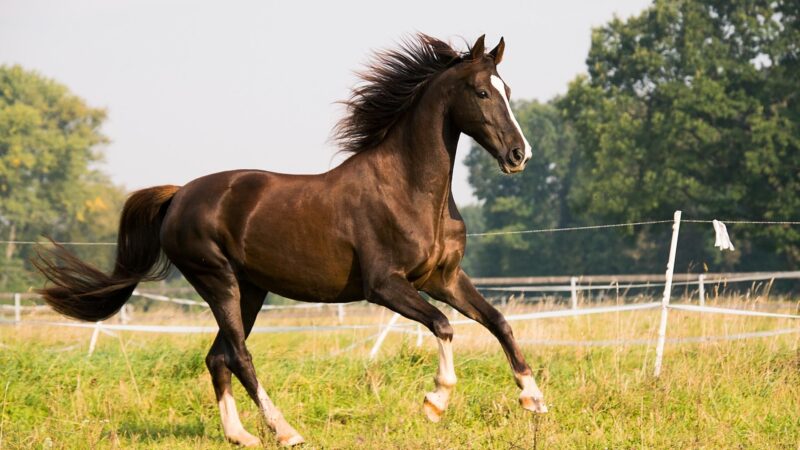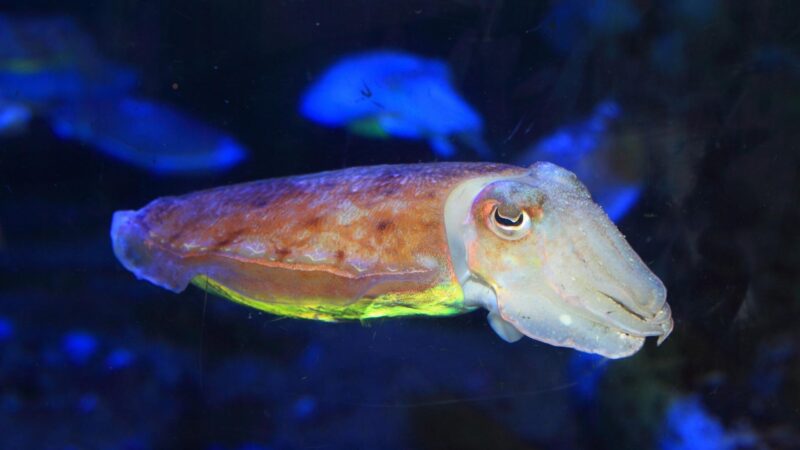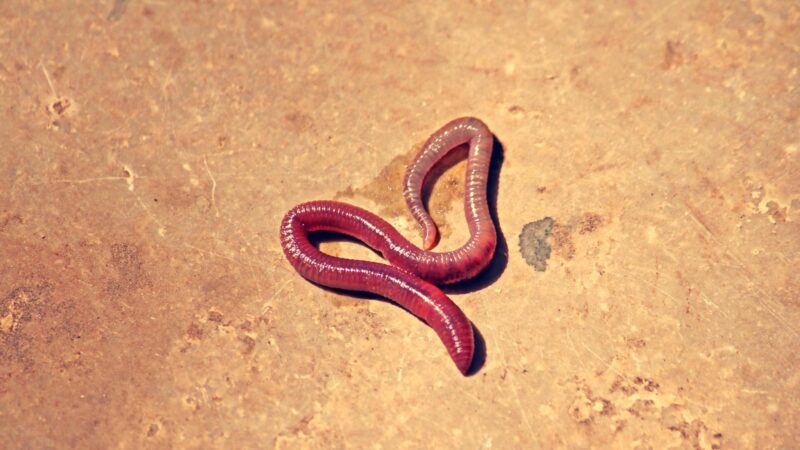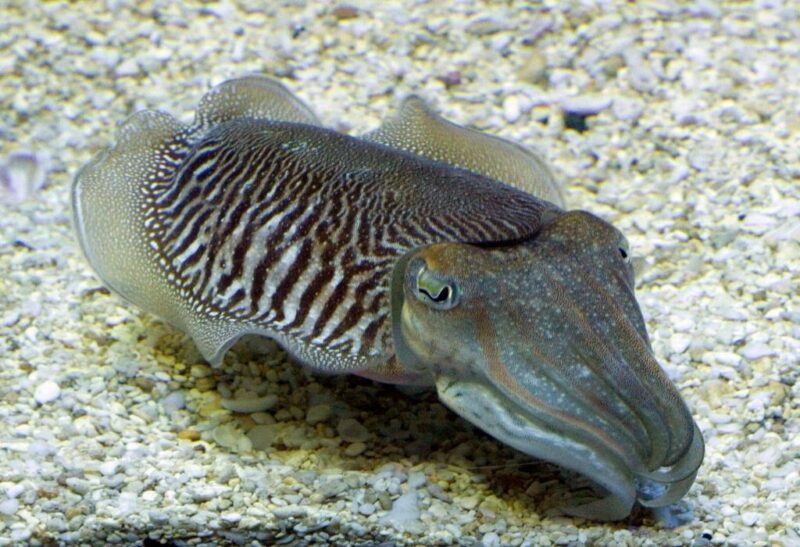Animals come in various shapes, including internal organs. Thus, it should not be surprising that some creatures have more than one heart. Every part of the body has a purpose, so some animals have more hearts to adapt to their environment.
The animals with multiple hearts are horses, cockroaches, cuttlefish, hagfish, earthworms, squid, and octopus. As you can see, most of them are invertebrates, and there’s a four-legged animal and an insect.
It’s the wonder of nature as having multiple hearts is not exclusive to a certain phylum. Having more than one heart has a purpose to serve. To learn more about them, read on.
Table of Contents
7 Awesome Animals With Multiple Hearts
Horses

You may have heard that horses have five hearts. In reality, a horse has only one heart. It seems that there are four more because of the frogs in its body. The frogs in the horse are not amphibians, but they’re sponge-like tissue situated between the hooves.
As you know, horses have four legs, so there are four frogs per horse. They pump blood, amounting to a quart of blood when the body goes through twenty strides. No muscular structure is found around the veins in a horse’s legs. It’s the reason why these frogs have this responsibility as veins are not elastic, and they can’t pump blood like arteries.
- Scientific Name: Equus caballus
- Appearance: Horses have oval-shaped hooves, unguligrade foot posture, muscular torso build, long thick necks, big elongated heads, long slender legs, and long tails. But they have a short mane.
- Color: White, black, brown, red, yellow
- Lifespan: 25 to 30 years or up to 62 years
- Length: 220 to 280 cm
- Diet: Leaves, stems, bark, wood, grains, seeds, nuts
- Number of Hearts: One with four frogs
Cockroaches

Specifically, a cockroach has a heart-aorta with around 16 chambers. Thus, there are lateral segmental blood vessels inside the bodies of cockroaches. They can be on the abdomen, meso, and meta-thorax. The oxygenated blood fills every chamber through the ostia, which are a pair of slit openings.
- Scientific Name: Blattodea
- Appearance: Cockroaches have flat, oval-shaped bodies. They have long antennae and long, spiny legs.
- Color: Dark brown, reddish, reddish-brown, tan, black
- Lifespan: Up to 1 year
- Length: Up to 2 inches
- Diet: Decaying organic matter, sweets, paper, fruits, book bindings, cloth, dead insects, inside the animal’s hide, old, rice, and more
- Number of Hearts: One tubular heart with 13 chambers
Cuttlefish

A cuttlefish has three hearts on which the two pump blood sent to the gills. The job of the last one is to let the blood circulate through the body. As a cephalopod, the blood of the mollusk is green because of hemocyanin filled with iron. Hemocyanin works like hemoglobin found in human blood.
- Scientific Name: Sepia officinalis
- Appearance: A cuttlefish has eight arms for grabbing prey and a pair of long tentacles from its internal pockets so it can get hold of the prey. It has a cuttlebone for its buoyancy. Since it has the ability of the body-patterning technique, it’s one of the animals that can camouflage for defense mechanisms and intimidation.
- Color: Adaptation of the surrounding color due to body-patterning techniques
- Lifespan: 2 years, and female dies after laying eggs
- Length: 1 to 35 inches
- Diet: Fish, crustaceans such as shrimps, prawns, and crabs
- Number of Hearts: Three
Hagfish
Hagfish is said to have three hearts because there are three chambers in one heart. These chambers are called sinus venosus, single ventricle, and single atrium. Since it’s an invertebrate, its heart contracts in the sinus venosus. The blood pumps in one direction in all chambers.
The heart of a hagfish is composed of valves and cardiac muscles, which are smaller than mammals and just half the size. Hearts accessory is also available, and there are several of them. They are referred to as contractile blood vessels. Primarily, there’s a portal heart that pumps blood to cardinal hearts, caudal hearts, and the liver.
The hagfish don’t have coronary blood vessels. There’s only deoxygenated blood that depends on anaerobic metabolism.
- Scientific Name: Myxini
- Appearance: A hagfish is a long, slender animal that appears like an eel. It’s also known for its slimy body. Four tentacles are on its mouth used to catch prey.
- Color: Pinkish
- Lifespan: 17 to 40 years
- Length: Around 50 cm but can be up to 127 cm
- Diet: Small invertebrates, dying and dead fish
- Number of Hearts: One heart with 3 chambers
Earthworms

To be exact, earthworms don’t have a heart but five aortic arches that fulfill the heart’s function. These arches have endothelial cells, which form myoendothelial cells and myofilaments. They’re surrounded by circular muscle cells. The earthworm’s plasma is in all the vessels, and its blood pigment is called erythrocruorin.
- Scientific Name: Lumbricina
- Appearance: Earthworms don’t have noses, eyes, and ears.
- Color: Reddish brown
- Lifespan: Up to 8 years
- Length: 10 mm to 3 m
- Diet: Soil, decaying roots and leaves, living organisms like rotifers, protozoans, nematodes, fungi, and bacteria
- Number of Hearts: Ten aortic arches that act as hearts
Squid

The three hearts of the squid are a pair of branchial hearts and a systemic heart that has two upper auricles and one lower ventricle. The job of branchial hearts is to pump blood to the gills, where the oxygen is taken up.
The blood that flows into the systemic heart is distributed to the whole body. The squid’s blood is blue because of hemocyanin, a substance that has copper content.
- Scientific Name: Teuthida
- Appearance: The head is on one side of the squid’s body while the foot is on the other side. There are two tentacles around its mouth. It has a set of 8 arms too.
- Color: Different colors depending on the surroundings as squid can adapt various camouflage
- Lifespan: 1 to 2 years
- Length: 60 cm to 13 m
- Diet: Fish, crustaceans
- Number of Hearts: Three
Octopus
As a cephalopod, an octopus has three hearts, which are one systemic heart and two branchial hearts. The systemic heart pumps blood to different sides of the body of the octopus. On the other hand, the branchial hearts pump blood via the gills. Their action can also occur when the blood leaves the gills.
An octopus will be fine even though one of the branchial hearts stops working. It means that the gill next to the dysfunctional heart doesn’t function. But if its systemic heart stops working, there’s no way that an octopus can survive as it pumps blood and delivers the essential oxygen to the whole body.
- Scientific Name: Octopoda
- Appearance: It has an elongated body with a head and foot at each end. The brain and mouth are parts of its head. The foot is also considered an arm that has flexible, prehensile appendages.
- Color: Changeable
- Lifespan: 3 to 5 years
- Length: Up to 4.3 feet
- Diet: Other octopus, small fishes, crabs, clams, snails
- Number of Hearts: Three
Frequently Asked Questions
What Animal Has 8 Hearts?
There’s no living animal at the present that has 8 hearts, but there was in the past. A giant dinosaur called Barosaurus had 8 hearts. It stands 25 to 27 meters with a long neck and tail, so a massive force was needed to make the blood circulate in its body.
Which Animal Has 3 Hearts?
Cephalopods like octopuses, squids, and cuttlefish have 3 hearts, which are the systemic heart and two branchial hearts. The role of the systemic heart is to pump oxygenated blood to the entire body while the branchial hearts push the blood depleted of oxygen.
What Mammal Has More Than One Heart?
Mammals only have one heart, so no species has multiple hearts.
Why Do Smaller Animals’ Hearts Beat Faster Than Larger Animals?
An elephant is a large animal that has a lot of moving body parts, longer pathways, and abundant blood vessels. To achieve normal function, communication of body parts and distribution of energy are done slowly. This slow pacing includes the beating of the heart.
Diastolic blood pressure primarily drives coronary perfusion. This pressure depends on the aortic pressure and means pressure. Small animals need a ratio for these kinds of pressure within. Thus, they need to have a fast heart rate to push through with coronary perfusion within a short time.
Do All Animals Have Hearts, Even Microscopic Ones?
Not all animals have hearts. Aside from microscopic ones, coral, starfish, jellyfish, and sea cucumbers have no hearts.
Summary
Cephalopods like cuttlefish, squid, and octopus have three hearts composed of a systemic heart and a pair of branchial hearts. Other animals that are featured here don’t exactly have more than one heart. They have some body parts that act as the heart or some supporting parts that deliver a heart’s functions.
List of Sources
What would happen if we had three hearts and one of them stopped? Washington State University.
Bartel, J, (2018). 10 Amazing Animal Heart Facts. NC State University.
Hall, D. (2018). Cephalopods. Smithsonian.
Clement, C. (2015). Equus caballus. Animal Diversity Web.
Sepia officinalis. (2007). University of Wisconsin System.
